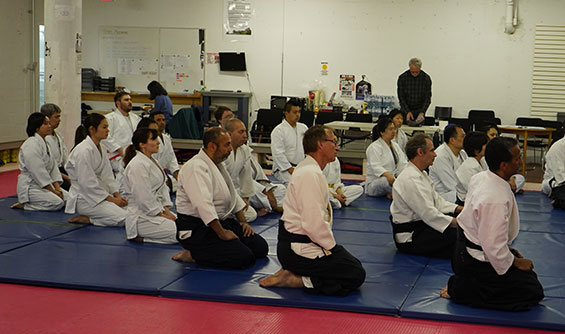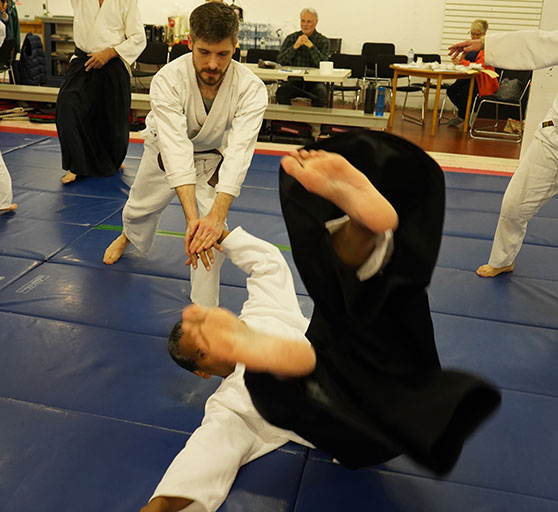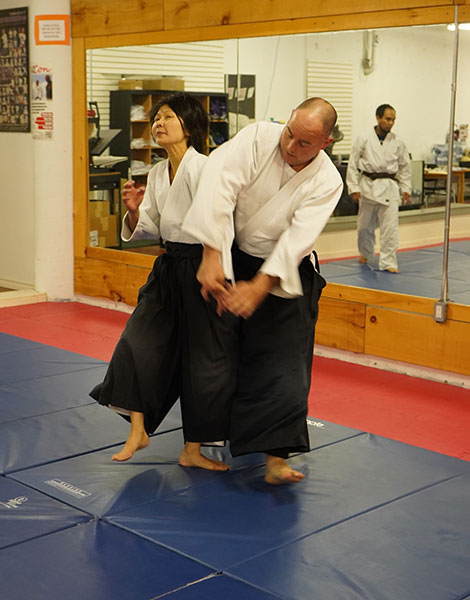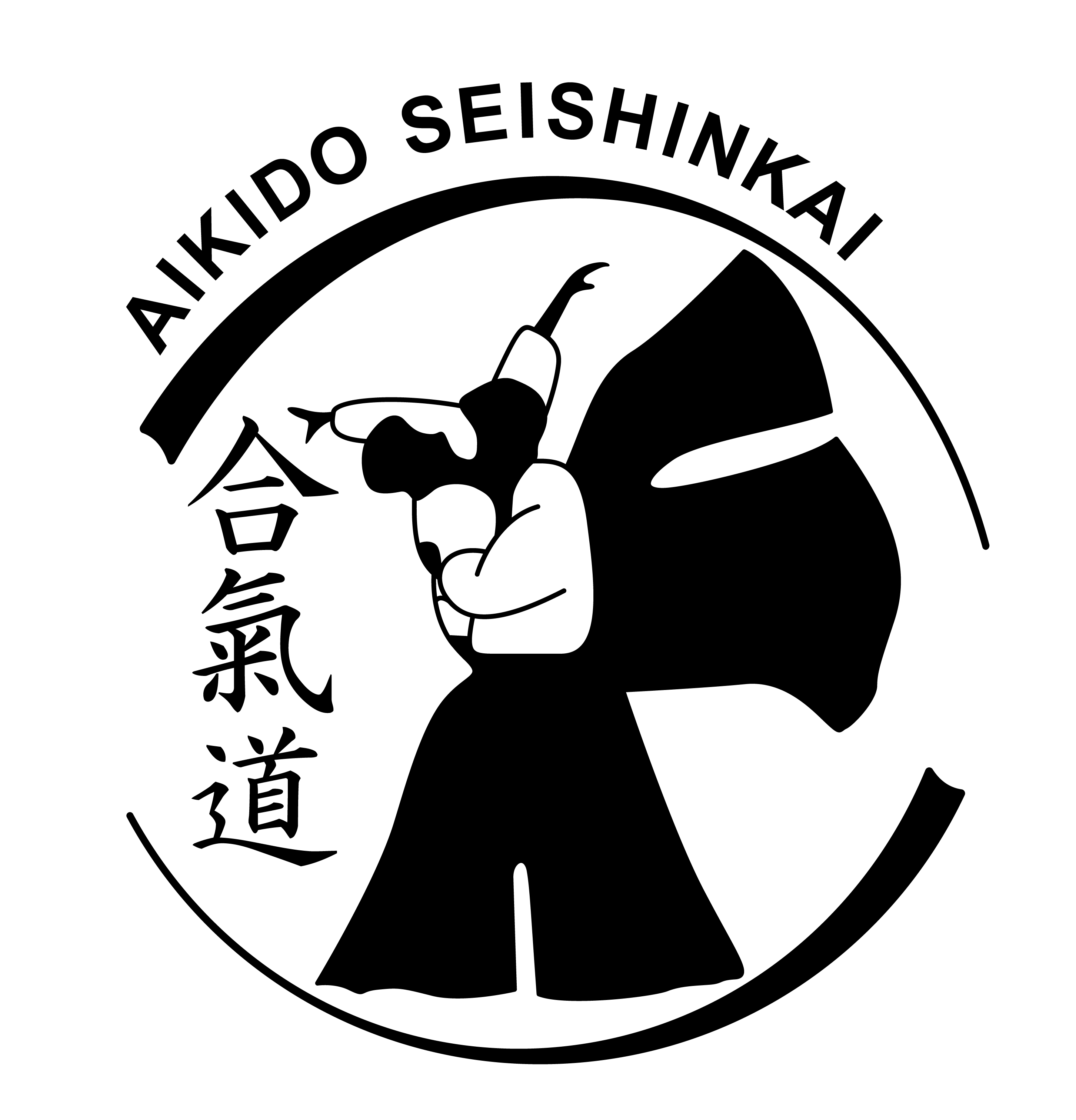Etiquette for practicing Aikido by Morihei Ueshiba O’Sensei
O Sensei was often asked for “rules” for the dojo as the popularity of Aikido grew. He resisted, but yielded when membership grew significantly. These are the points he made:
- In Aikido, one blow can determine life or death. When practicing, obey your instructor, and do not engage in useless contests of strength.
- Aikido is an art in which a person learns to deal with not only one but multiple attackers. It therefore requires that you practice at all times with careful awareness not only in front of you but in all directions.
- Practice at all times with the feeling of pleasurable exhilaration.
- The teachings of your instructor constitute only a small fraction of what you will learn. Your mastery of each movement will depend almost entirely on individual, earnest practice.
- Daily practice begins with light movements of the body, gradually increasing in intensity and strength. There must be no excessive strain. That is why even an elderly person can continue to practice pleasurably without bodily harm, and will attain the goal of his or her training.
- The purpose of Aikido is to train both body and mind and to develop a person’s sincerity. All Aikido techniques are secret in nature and are not to be idly revealed to others in public, not shown to rowdy or unprincipled people who will misuse them.
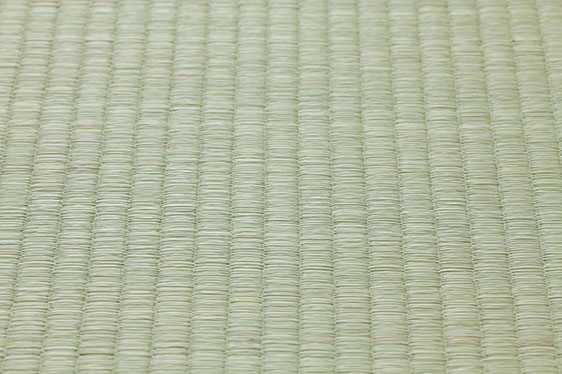
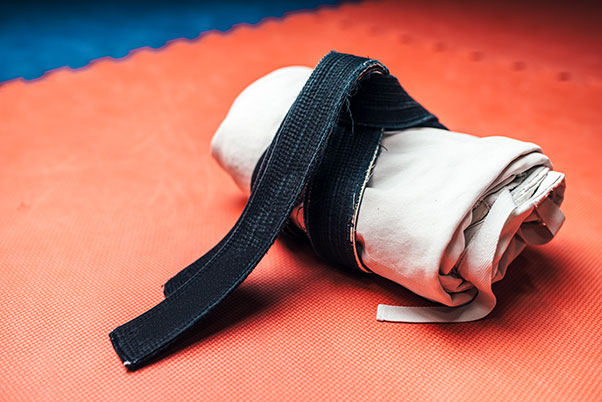
Dojo Etiquette
Masa Katsu Agatsu – True victory is self-victory.
In an Aikido dojo, the observation of basic forms of etiquette is integral to the creation of a respectful and attentive atmosphere which is condusive to learning. Although Japanese forms are unfamiliar to most Westerners, over a period of time they not only become comfortable expressions of courtesy, but also, as we come to understand the levels of meaning behind the forms, they can enrich and further our practice. Most basic to these forms is a bow, a gesture of respect and gratitude. In a dojo, please observe the following guidelines:
- A standing bow is done when entering or leaving the dojo.
- The formal bow at the beginning and the end of practice consists of two or three seated bows towards the shomen (frontwall of the dojo where Osensei’s picture is), four claps, one more bow, and then a mutual bow between teacher and students. The form and complexity of this ceremony marking the beginning and end of class varies somewhat from place to place, so in the case of a visiting instructor his or her example should be followed.
- Effort should be made to be on time for class, but if unavoidably late a student should wait for Sensei to acknowledge your request to attend the class, and then perform the formal bow individually before beginning to practice. If it is necessary to leave class early, a student should inform the instructor and do an individual formal bow at the close of his or her own practice.
- Onegaishimasu(“please”, or “I ask a favor”) and Arigato gozaimashita (“thank you”) are the expressions used at the beginning and the end of class, respectively, and also between partners at the beginning and the end of each individual practice.
- Traditionally the instructor is addressed as Sensei in the dojo. However, the extent to which this custom is followed depends on the individual instructor.
- The proper way to sit during class is in seiza — formal Japanese sitting posture. A crosslegged sitting position is acceptable if seiza is impossible. If a student has a particular problem with knees or feet that interferes with the ability to sit in seiza, make sure the instructor is informed of the problem. In any case, an attentive posture should be maintained. Slouching, lumping, or leaning is not conductive to the practice of balance and centering. Students should not sit with legs outstretched.
- Students should not sit with their backs towards the shomen (wall with Osensei’s picture); traditionally this is the place for the instructor or master to sit while watching class. If it is necessary to pass by when people are lined up in seiza facing the shomen, walk in back of them rather than in front.
- After the instructor demonstrates a technique, students bow, choose partners quickly, and begin to practice. When the end of a particular practice is signaled (often with two claps), students should stop practice immediately, bow to their partners, and quickly line up in seiza for further instruction.
- For reasons of safety, respect, and courtesy, it is essential that the teacher’s instructions be followed exactly. Many Aikido techniques can be dangerous if not practiced properly. Emphasis should be placed on learning as much as possible through intent observation and concentrated practice, and questions should be saved for when they are really necessary.
- Your GI should be kept clean, and fingernails and toenails should be kept short. No jewelry should be worn during practice. Do not use alcohol or drugs before class.
Observation of these forms of etiquette will help to create a good atmosphere in the dojo. But more important than the superficial observation of any form is the sincere and open-hearted attitude toward training which gives meaning to the forms.
